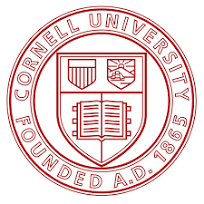Major Research Thrusts
- Malt barley Improvement – High input responsive varieties, rust resistance, low husk and protein content, low beta glucan and high diastatic power.
- Feed barley – Lodging resistance, grain yield, leaf blight resistance, Feed quality of barley with soft awns.
- Food (Hulless) barley – Yield, disease resistance & nutritional quality
- Dual purpose barley- Forage Yield, rejuvenation and forage quality
- Climate Change – Evaluation of varieties for drought tolerance, salinity conditions, sowing dates/maturity period.
- Input use efficiency of applied nutrient, irrigation and weed management, growth regulators and tillage
- Biotic stress – Rusts mainly yellow rust, leaf blight particularly in eastern and central India, insect pests (Aphid)
- Use of Molecular tools specially for blight, pests and quality component
- Popularisation of barley for health Awareness
- Extension of barley cultivation in non traditional areas
Research Achievements/Technologies developed
- 94 varieties of barley developed after AICRP initiation (1966) for different production conditions and for different purposes (feed, dual purpose, malt and food).
- 21 genetic stocks have been registered for disease resistance, quality and other agronomic traits with NBPGR.
- Two-row high yielding malt barley varieties namely DWRUB52, DWRB92, DWRB101 and DWRB 123 were developed for irrigated timely sown conditions by IIWBR, Karnal.
- Two-row high yielding malt barley varieties namely DWRB73 and DWRB91 and a six-row variety namely DWRUB64 were developed for irrigated late sown conditions by IIWBR, Karnal.
- Genetic stocks DWRB127, DWRB128, DWRB143 (for stripe rust resistance) and Kasota (high anti-oxidant activity), DWRB 30 (high beta glucan) and BK 1127(high 1000 grain wt and high grain protein content) were registered with NBPGR.
- Five molecular markers located on chromosomes 3H and 6H were found to be closely associated with beta-glucan trait in selected cross during bulk segregant analysis.
- Germplasm and breeding materials screened for rust and leaf blight and genotypes identified.
- The seed of barley should be sown to a depth of 5-7 cm at a distance of 22-23 cm. Malt barley crop can be sown at a distance of 18-20cm. 100kg seed/ha is optimum for good crop yield.
- Happy seeder should be used for sowing in rice /residue based field. It will save time, energy and money. This resource conservation technique enhance the nutrient and water use efficiency, enhances soil fertility/ organic carbon, reduces soil temperature, reduces weed flora and terminal heat effect.
- To control the seed borne diseases, seed should be treated with Bavastin/Vitavax in the ratio of 1:1 @ 2 g per kg seed or treat the seed with Raxil @ 1g/ kg.
- For the control the termite, Chlorpyriphos (20EC) 125 ml per 100kg seed in 5 liter of water can be used.
- Recommendations of nutrient for barley as per production conditions is as follows:
| Zone/State | Production conditions | Recommendations N:P:K, kg.ha |
| Northern Hill Zone | Rainfed | 40:20:20 |
| NWP Zone andNEP Zone | Irrigated timely sown | 60:30:20 (feed barley)90:40:20 (malt barley) |
| Irrigated Late sown | 60:30:20 | |
| Rainfed | 40:20:20 | |
| Dual Purpose in Plains and Hills | Irrigated/ rainfed | 75:30:20 (plains)60:30:20 (hills) |
- First irrigation should be done at active tillering stage which comes about 30-35 days after sowing. Second irrigation is done at flag leaf stage, comes about 60-65 days after sowing. Third irrigation is done at milky stage, comes about 85-90 days after sowing. Of these stages active tillering and milky stage are most critical stage for irrigation. Heavy irrigation should be avoided as it cause lodging, severe yellowing as well as reduction of tillering.
- One hand hoeing after first irrigation is sufficient. Following herbicides have been recommended for contro of weeds.
| Type of weeds | Weedicides | Dose/ha | Method of application |
| Broad leaf | 2,4-D | 500 g | Spray at 30-35 DAS using 400-500 litres of water |
| Metsulfuron | 4 g | Spray at 30-35 DAS using 400-500 litres of water | |
| Narrow leaf | Pinaxaden (Axil) | 30-35 g | Spray at 30-35 DAS using 400-500 litres of water |
| Pendimethilin | 1000-1500g | Spray pre-emergence using 400-500 litres of water |
- Dual purpose barley crop can be given one cut at 50-55 days after sowing for green fodder in the plains 70-75 DAS in Hills and the regenerated crop may be utilized for grain purposes. Barley varieties RD2035 and RD2552 in NWPZ and RD2715 in plains and BHS380 in northern hills zone.
- Application of Pinoxaden @ 40 g/ha + carfentrazone @ 20 g/ha OR Pinoxaden @ 40 g/ha followed by metsulfuron @ 4 g/ha for effective control of complex weed flora in barley is recommended in NWPZ.
- Reduced Till Direct Seeded Rice-Zero Till barley + Rice residue 6t/ha gave highest yield and economics in different residue management treatments
- Strong linkages with national and international organisations, private industries and other end users.
Facilities available
- Automatic Micro Malting System for micro malting of barley genotypes
- NIR System for non destructive grain and malt quality evaluation
- Malt Mashing Bath for extraction of hot water extract (wort) from malt at laboratory scale
- Malt Grinding Mill for grinding of malt for hot water extraction
- Grinding mill for fine grinding of barley grains
- Malt Friability Meter for analysis of malt friability and homogeneity in the small laboratory samples
- Other facilities: In addition to the above the laboratory is equipped with several other equipments required for grain and malt quality analysis like estimation of beta-glucan, husk content, wort filtration rate and other biochemical traits.
- Mid term storage Module for storage of barley germplasm. About more than 8000 genotypes have been stored.








